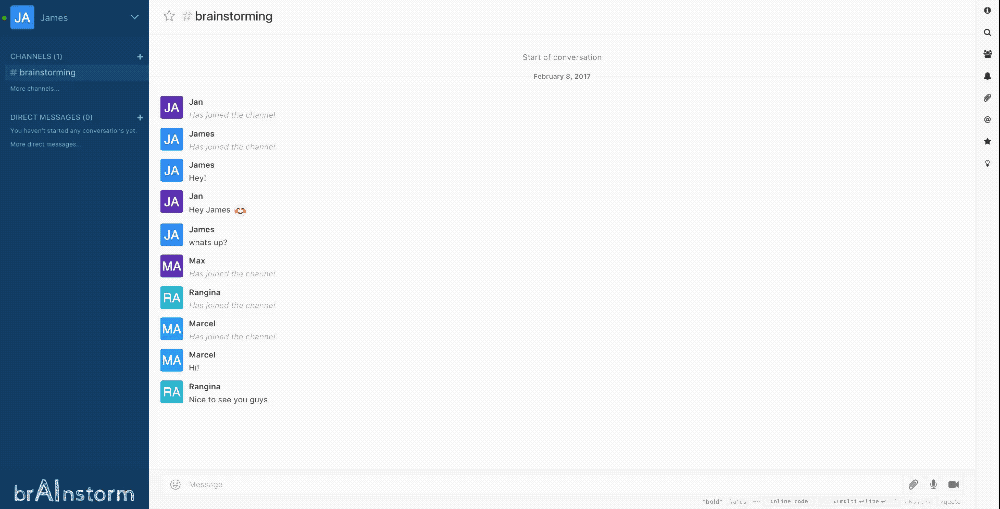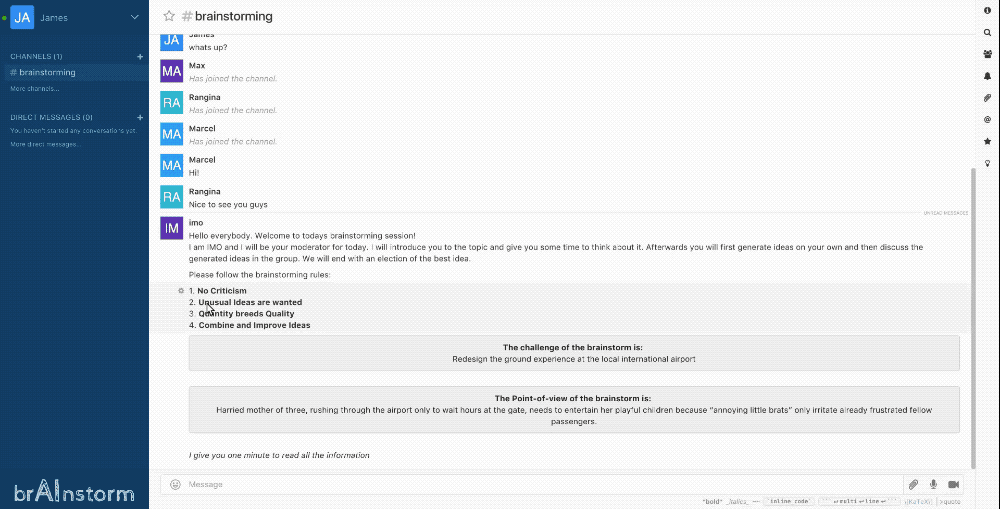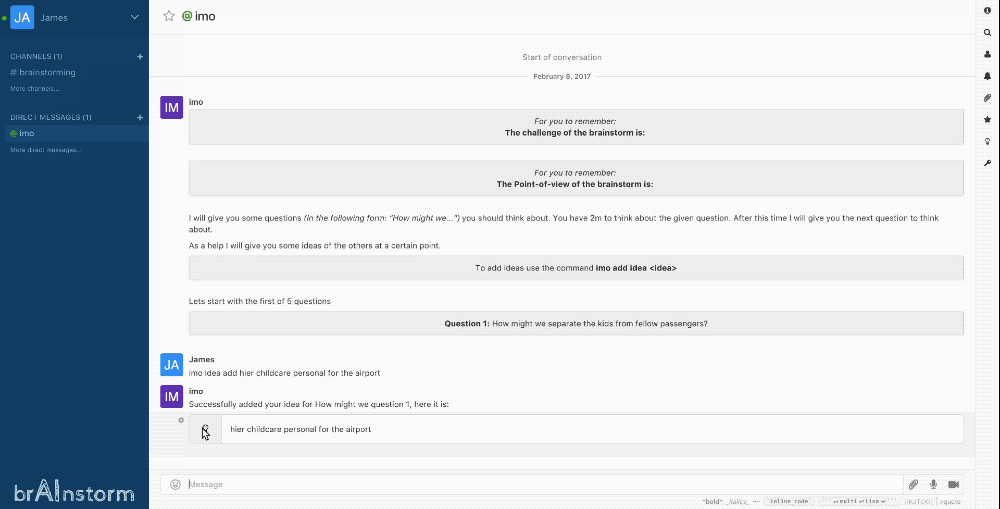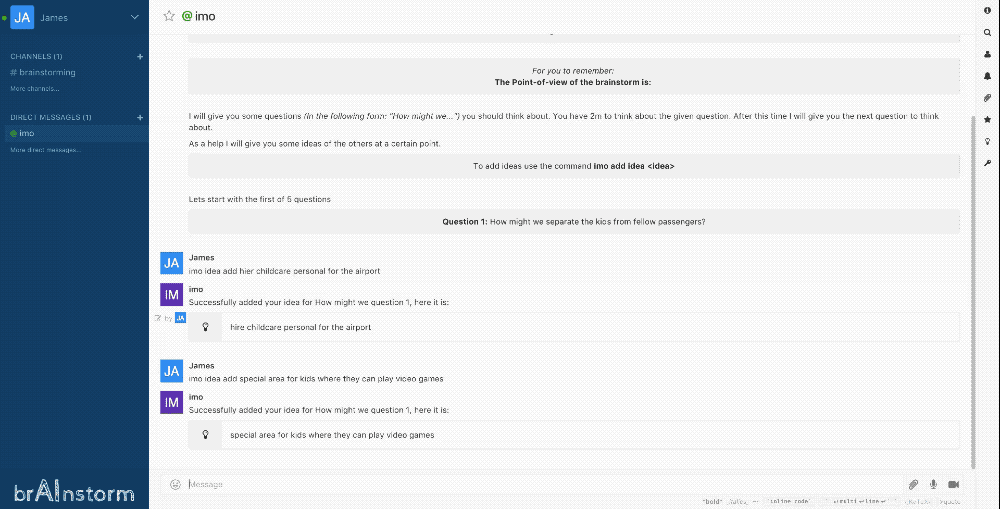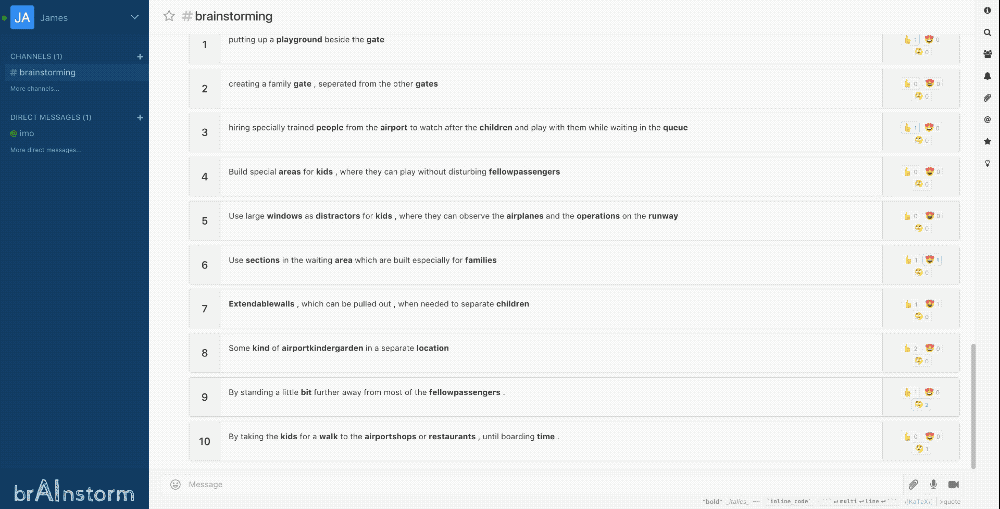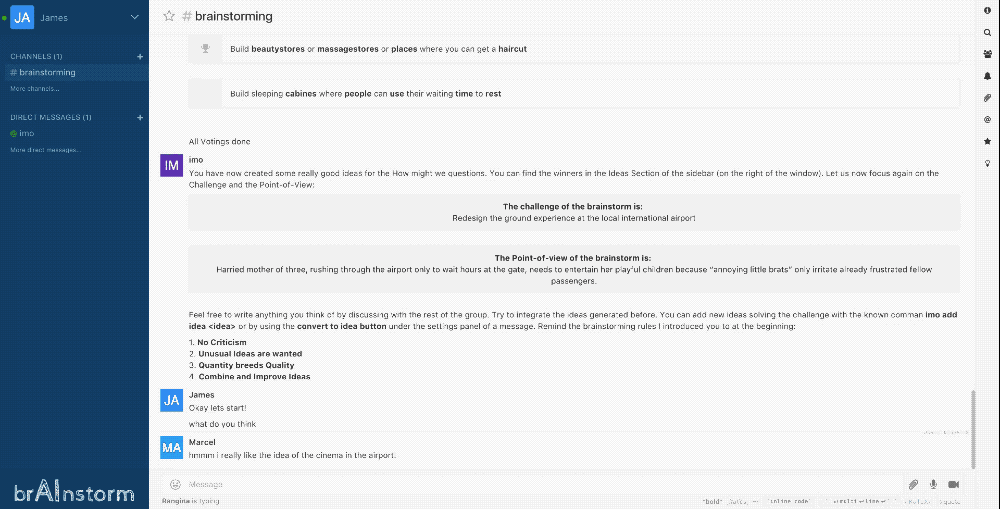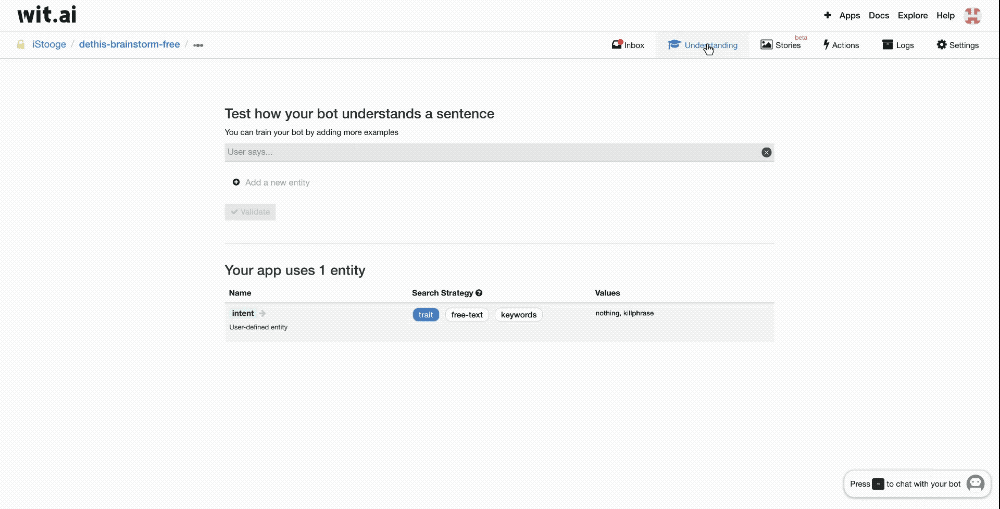Artefact Demonstration
Abstract
In order to generate valuable innovations, it is important to come up with potential beneficial ideas. A well-known method for collective idea generation is Brainstorming and with Electronic Brainstorming, individuals can virtually brainstorm. However, an effective Brainstorming facilitation always needs a moderator. In our research, we designed and implemented a virtual moderator that can automatically facilitate a Brainstorming session. We used various artificial intelligence functions, like natural language processing, machine learning and reasoning and created a comprehensive Intelligent Moderator (IMO) for virtual Brainstorming.
The Brainstorming Process
When the initiation was done by an admin and all participants joined the channel, the brainstorming session can start. The single steps of this session are shown in the following figure. The first phase is the idea generation. This phase is all about the individual creativity of the participants. First they get the Point-of-View and a problem statement. In predefined time intervals a How-might-we (HMW) question is asked to stimulate their idea generation. In this first phase the communication between the participants is blocked, so they can concentrate on their individual idea generation. In addition to the provided HMW question they get a selection of ideas generated by the others, after submitting an own idea.

After the time for the idea generation is over, the voting starts. The idea behind the voting is, to thin out the mass of ideas generated in the previous phase. In the voting phase the generated ideas are shown to all the participants sorted by the HMW questions. The participants can then place their votes and afterwards the three best ideas per HMW question are shown and used for further discussion. After all votings are done, the discussion starts. The idea of the discussion phase is that the group can discuss the generated ideas, and perhaps modify or deepen them. The goal of the discussion is to solve the given problem statement and to generate a final idea.
Technology
The following figure shows the adopted Brainstorming process within our artifact and the underlying technology behind each function.

Selected Functions
For getting an idea of the prototype, take a look at the following clips, showing some selected functions.
Parameter Definition using Commands
Setting the challenge through the Initiation phase with the help of the command Imo challenge set
Parameter Definition using Natural Language
Instead of using commands, one can also use natural language for parameter definition. The natural language function can be accessed with the command Imo hey <natural language statement> In the following Clip one can see the admin asking for some help using natural language.
Moderation
Imo introduces the participants and gives them the Point-of-View as well as the challenge.
Moreover Imo guides the participants through the single brainstorming phases.
Idea Generation
Ideas can be added by using the command Imo idea add.
Mistakes can easily be edited through the User Interface
An overview of all generated ideas can be found in the sidebar
Idea Giveback
While the participants are brainstorming individually they get an automatic idea giveback, containing ideas, the others thought about.
Voting
After the individual idea generation, the mass of generated ideas is thined out with the helpt of a voting.
The best three ideas are shown afterwards. They can also be viewd in the sidebar.
Killer Phrase Detection
Through the dicussion killer phrases are automatically detected by IMO.
This is done with the help of wit.ai's Bot Engine. The following clip shows wit.ai's Inbox, showing new income statements with their classification, which can be validated or corrected.
The learned statements for the intent killerphrase can be seen in the following.
Prospect
With our artifact, we created an innovative solution for virtual Brainstorming that can be supported, organized and executed with the help of a virtual moderator. With our evaluations, we plan to examine the applicability of our prototype. Furthermore, we plan to examine the interaction between individuals and an AI, which can contribute to the understanding of group interaction theories. In this context, we take our artifact to the next level, by developing an independent artificial participant, a Creative Artificial Intelligence (CAI). Currently we are implementing CAI, a creative and active participant that is capable of human-level creativity. We plan on further investigating the interaction with AI in creative process and examine, whether theories of group interaction apply. In summon, it can be said, that we designed a novel artifact, that can contribute to practice in many ways and change or further develop theories on group interaction.
Video Demonstration
Here you can find the artefacts full demonstration: brAInstorm Screencapture on Vimeo
Password: desrist2017
By
M.Sc. Timo Strohmann
Dipl. Wirt.-Inf. Dominik Siemon
Prof. Dr. Susanne Robra-Bissantz





